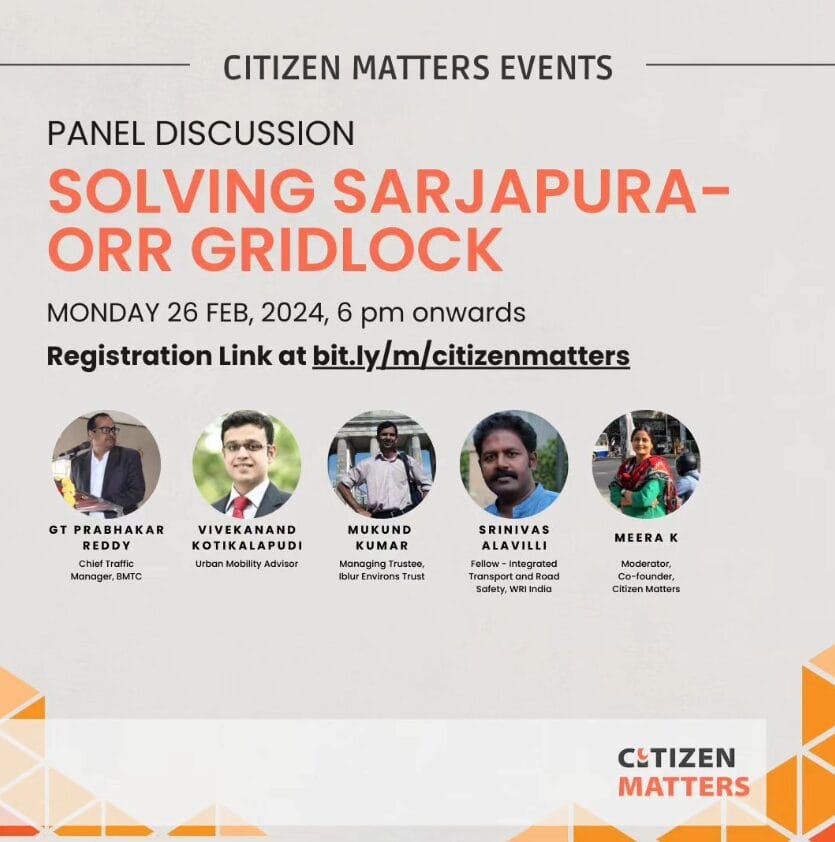The traffic congestion at Outer Ring Road (ORR)-Sarjapura Road has been a long-standing issue. To address this, Citizen Matters held a panel discussion, ‘Solving Sarjapura-ORR Gridlock’ on February 26th. Moderated by Meera K, co-founder of Citizen Matters, the panel included G T Prabhakar Reddy, Chief Traffic Manager, BMTC; Vivekanand Kotikalapudi, Urban Mobility Advisor; Mukund Kumar, Managing Trustee, Iblur Environs Trust; and Srinivas Alavilli, Fellow- Integrated Transport and Road Safety, WRI India.
Sarjapura Road is an integral connection to the IT corridor of south-east Bengaluru. ORR is completely developed with a focus on tech parks. There is currently a surge in residential projects on or around Sarjapura road.
Key findings and highlighted issues
- About 7 lakh people commute to work from different parts of the city to the IT corridor of ORR-Bellandur. About 75,000 to 1 lakh commuters live in or around Sarjapura Road, around half of them use their personal vehicles to commute, according to surveys by the Save Our Sarjapura coalition
- Many of these areas are old village roads, which are narrow and potholed. Many residential apartments have come up here. The access to these neighbourhoods is not easy.
- There are more than 15,000 passenger car units per hour during peak time at Iblur junction
- The lack of decent footpaths at Iblur junction puts pedestrians’ lives at risk
Infrastructure development need of the hour
Well-planned infrastructure will help in easing traffic in this route. But the metro station for Sarjapura will come up near the Iblur bus stop and not near the Sarjapura side, which would make reaching the metro station a challenge. A foot over bridge has been proposed by BMRCL, which is quite a long walk, but unavoidable. However, despite the challenges, the fact that Sarjapura will be getting a metro line is in itself a silver lining.
BMTC’s services
- There are three underutilised depots adjacent to Sarjapura. Two depots are at Kodathi and Sadaramangala, where BMTC can add around 50-100 schedules in each depot. One more depot is in Chikkanagamangala
- Sarjapura will soon see 120 schedules as promised by BMTC
- BMTC has also recently started 500 HS buses and have released four AC buses
- AC buses on the Sarjapura-Hebbal route was launched a few days ago
Read more: Missing last mile connectivity: Sarjapura Road residents want better bus routes
Encouraging public transport
- Incentivise employees who opt for public transport, and see if at least half the population to switch to public transport
- Frequency of buses has increased and AC buses have been added. The key is to break the 15-minute barrier. If people see the buses, they will board
- Create viable footpaths for ease of walking to bus stops. Walkability audits have to be done. Spotting bus stops is not enough, pedestrians should be able to easily reach them
Watch the full discussion:
